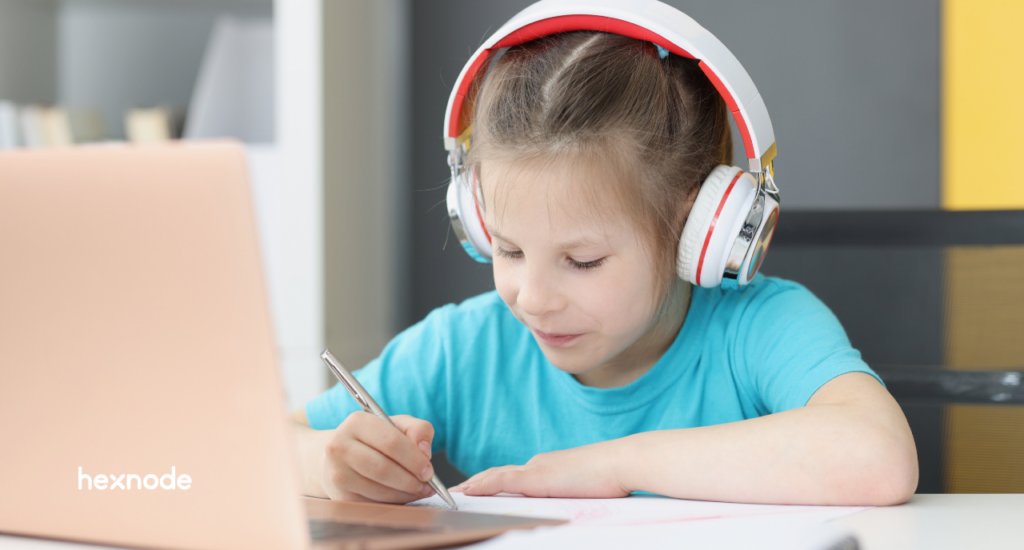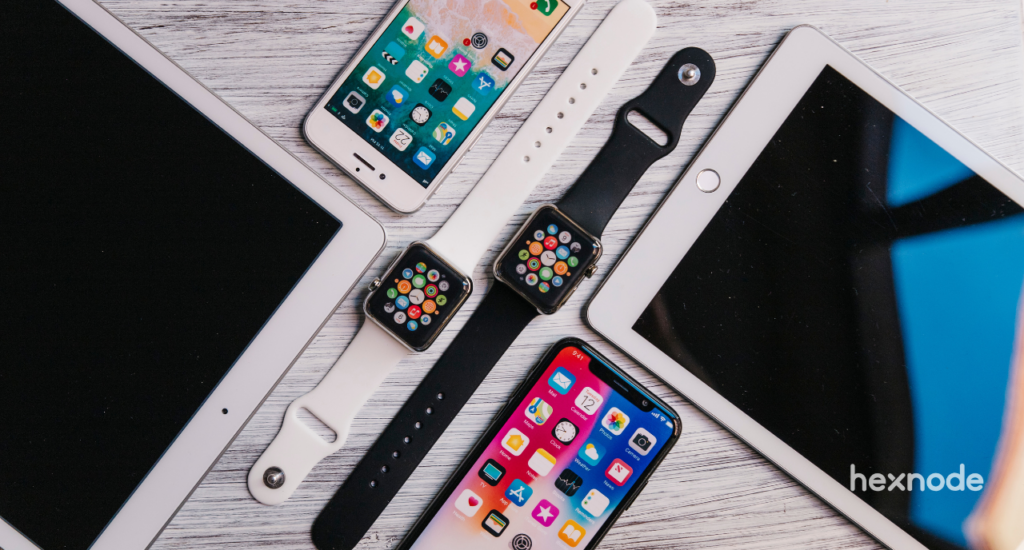Smartphones and tablets have taken educational technology into a league of its own. Though BYOD (Bring Your Own Device) and mobile integration were initially met with much skepticism, many schools have now given in to the amazing benefits. Let’s have a closer look at the benefits and potential risks.
Benefits
1. Device familiarity
Everyone has a learning curve when it comes to new technology. Though kids are fast learners, BYOD in schools helps a great deal as there is no time wasted in getting to know the device. They can enroll the devices and start learning right away, not to mention the comfort and ease of using a familiar device.
Sometimes attaining the deepest familiarity with a question is our best substitute for actually having the answer.
– Brian Greene
2. Unlimited information
With their smart devices connected to the school Wi-Fi network, students have access to all the information they want, right at their fingertips.
Information is power. Particularly when the competition ignores the opportunity to do the same.
– Mark Cuban
3. BYOD in Schools – Takes the boring out of education
Learning through their beloved gadgets is more engaging and fun for the students. Interactive apps and content make the student stay glued to their device and enhances their interest in learning new things.
I never teach my pupils; I only attempt to provide the conditions in which they can learn.
– Albert Einstein
4. Seamless collaboration
BYOD in schools helps students work together and share content with ease, it also makes it easier for the teachers to collaborate with students to give them the required help. When it comes to group projects, collaboration is simple and effective.
Alone we can do so little; together we can do so much.
– Helen Keller
5. Beyond textbooks
With textbook prices skyrocketing to 812% in the past 35 years it’s time to go for a cheaper solution. Students can break-free of the outdated textbooks (which has to be periodically replaced) and access the most up-to-date information on any topic.
I would say that, in the future, the book will be reserved for things that function best as a book. So, if I need a textbook that’s going to be out of date because of new technological inventions, you’re better off having it where you can download the supplements or the update.
– Art Spiegelman
6. Anytime, anywhere learning
With smart devices in hand, school hours don’t matter anymore. Students can keep the learning going 24/7 on their own. The convenience and ease of ‘learning at will’ rather than a specified time every day can promote a student’s interest in learning.
If you had always been free to learn, you would follow your natural tendency to find out as fully as possible about the things that interest you, cars or stars. We are born with what they call “love of learning
– Grace Llewellyn
7. Cost savings
Allowing BYOD can save the school a significant amount of money. Providing each student, a unique device is no small challenge. This can help bring down the cost of tuition thus enabling more students to get an education. BYOD instills a sense of responsibility in students. They’ll look after their own gadgets and schools won’t have to spend much on securing devices.
He who opens a school door closes a prison.
– Victor Hugo
8. High-end devices
Students tend to bring cutting-edge devices. Both students and teachers benefit from the enhanced experience. Newer technology and updates in technology are well used in such cases enabling a higher productivity.
Technology feeds on itself. Technology makes more technology possible.
– Alvin Toffler
9. Personalized learning
With BYOD in place, teachers can easily meet the different learning needs of a wide variety of students. With highly personalized education through their devices, each student can learn at their own pace and follow their interests.
Tell me and I forget. Teach me and I remember. Involve me and I learn.
– Xunzi
10. Easier evaluation
BYOD helps teachers grade the assignments and tests much easier. With dedicated apps, teachers can look up online scores and see how well their students are doing leading to faster grading and a lot of time saved which can be spent on teaching.
The difference between school and life? In school, you’re taught a lesson and then given a test. In life, you’re given a test that teaches you a lesson.
– Tom Bodett
The positives do not end there. However, let’s not overlook these challenges.
Challenges
1. Theft and loss
The more the valuable stuff students bring to school, the more the chance of theft. Kids losing expensive devices at school don’t bode well with the parents. Though BYOD can help bring down tuition costs it is still costly for the parent to buy and maintain a device for their kid.
2. Overloading the network
Many students will bring more than one device. Connecting all of them to the school Wi-Fi may weigh down the network. The schools will always have a hard time managing their networks as there will be a lot of devices connected simultaneously. Providing a stable connection to all the users every day will never be an easy task.
3. Malware
Malicious apps installed on a student’s device may cause security vulnerabilities on other devices or invite more web-based threats. The chances of students getting phished are very high and the use of more devices in schools is not going to help.
4. Distraction
It is easier to get distracted while working on a BYOD device. As there are fewer restrictions, students might end up playing games or browsing. The misuse of technology by students has greatly increased in the past few years, the students have so much power at their fingertips at such a young age. Social media and targeted ads can affect students in a very negative way.
5. Apps availability
The dedicated learning apps may not support all platforms and thus not necessarily be available for all the devices students bring to school. Availability issues can easily be solved these days but still a con, nonetheless.
BYOD may highlight the financial disparities between the students. All the students may not be able to afford these devices. Students who bring low-end tablets can get bullied and may ultimately miss out on the learning experience. The basic principles which led to the use of school uniforms for students are getting thrown out of the window here.
7. Security
The school’s security should be well maintained, as there is a possibility that student’s data might get leaked. Not to mention the pressure on the management to keep tabs on everything at all times is by no means a small feat.
Despite these challenges, it’s worth every bit going BYOD. Not because it’s in trend but because it helps prepare our students and teachers for the future, one of endless knowledge and possibilities.
Research shows that there is only half as much variation in student achievement between schools as there is among classrooms in the same school. If you want your child to get the best education possible, it is actually more important to get him assigned to a great teacher than to a great school.
– Bill Gates





